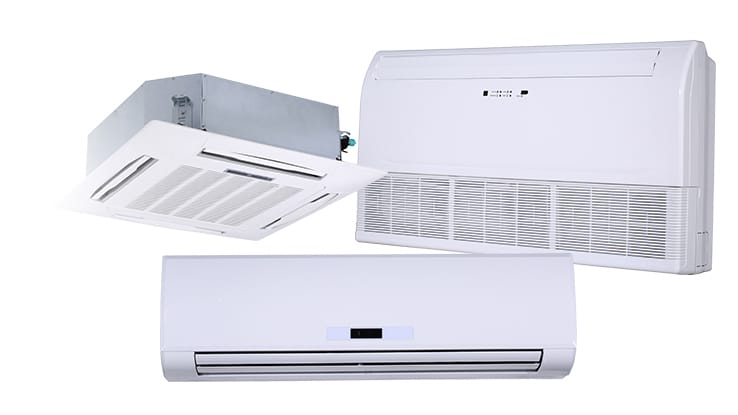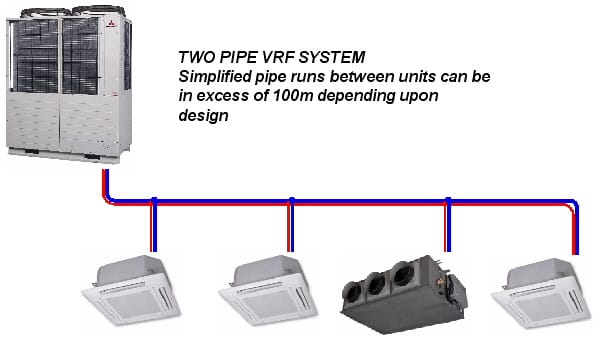VRF Technology – Part 1
- Details
VRF Technology – what you need to know
Part 1 – What is VRF
Variable refrigerant flow (VRF), also known as variable refrigerant volume (VRV), is an HVAC technology invented in 1982. Like ductless mini-splits, VRFs use refrigerant as the cooling and heating medium. This refrigerant is conditioned by a condensing unit, and is circulated within the building to multiple indoor units.

Typical Indoor VRF units
Variable Refrigerant Flow (VRF) air conditioning systems are an extremely energy efficient means of precisely regulating the temperature within commercial buildings. More often than not, the rooms or zones within the building will need to operate at differing temperatures. The cooling and heating requirements of these spaces inevitably change throughout the day, typically as a result of varying occupancy, heat emitting office equipment and lighting, changes in outdoor temperature and notably, the position of the sun. The combined effect of these internal and external influences often means that some areas of the building require cooling, while simultaneously, other areas require heating to maintain a constant and comfortable internal environment.
A well-designed VRF system will typically serve areas known to have opposing heating and cooling loads and can, therefore, redistribute excess heat from areas that require cooling to those that require heating.
Heat recovery VRF systems deliver the ultimate in energy efficiencies. A typical VRF system can achieve a heating COP of 3.5. A high efficient condensing boiler will have a COP of 1.05
The condensing unit can be either an air source (outdoor) or water source (indoor) condenser. These systems will be further explored in Part 2 of this series.

Air cooled condenser VRF system
In spite of these clear benefits, VRF installations are still only 5 to 9 percent of the national HVAC market due to upfront investment. In terms of cost comparison, VRF can be anywhere from 10 to 50 percent more expensive than traditional systems. But with focus limited on just the initial price, designers, engineers and building owners may not be familiar with the long-term cost benefits of a more precise and resilient system.
Key benefits of VRF/VRV air conditioning systems:
Reduced Noise Levels - Indoor and outdoor units are so quiet that they can be placed just about anywhere, providing more flexibility on how to use indoor and outdoor space. Indoor ductless operating sound levels are as low as 27dB(A) and ducted units sound levels are as low as 29dB(A)
Outdoor units can even be placed directly under a window and quiet indoor units are perfect in environments that require minimal disruption like schools, places of worship, libraries and more. When compared to the single split system, a VRF system reduces outside noise levels by almost 5 dB@1m.
A VRF system complete with a Dedicated Outdoor Air System (DOAS) provide a very high efficient HVAC system. If you are unfamiliar with DOAS, we have a past article on these systems. (dedicated-outdoor-air-systems).
For more information on this topic and others, please contact our office:
The TLJ Team